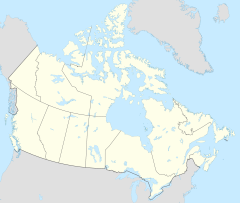
The Canadian Pacific Railway, also known simply as CPR or Canadian Pacific and formerly as CP Rail (1968–1996), was a Canadian Class I railway incorporated in 1881. The railway is owned by Canadian Pacific Kansas City Limited, known until 2023 as Canadian Pacific Railway Limited, which began operations as legal owner in a corporate restructuring in 2001.

The Kettle Valley Railway was a subsidiary of the Canadian Pacific Railway (CPR) that operated across southern British Columbia, west of Midway running to Rock Creek, then north to Myra Canyon, down to Penticton over to Princeton, Coalmont, Brookmere, Coquihalla and finally Hope where it connected to the main CPR line.
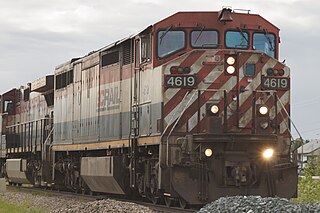
The British Columbia Railway Company, commonly known as BC Rail, is a railway in the Canadian province of British Columbia.
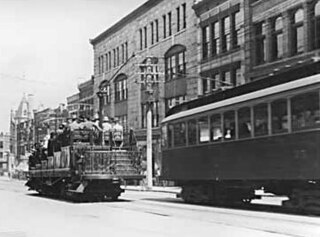
The British Columbia Electric Railway (BCER) was a historic railway which operated in southwestern British Columbia, Canada. Originally the parent company for, and later a division of, BC Electric Company, the BCER assumed control of existing streetcar and interurban lines in southwestern British Columbia in 1897, and operated the electric railway systems in the region until the last interurban service was discontinued in 1958. During and after the streetcar era, BC Electric also ran bus and trolleybus systems in Greater Vancouver and bus service in Greater Victoria; these systems subsequently became part of BC Transit, and the routes in Greater Vancouver eventually came under the control of TransLink. Trolley buses still run in the City of Vancouver with one line extending into Burnaby.

Waterfront station is a major intermodal public transportation facility and the main transit terminus in Vancouver, British Columbia, Canada. It is on West Cordova Street in Downtown Vancouver, between Granville and Seymour Street. The station is also accessible via two other street-level entrances, one on Howe Street to the west for direct access to the Expo Line and another on Granville Street to the south for direct access to the Canada Line.
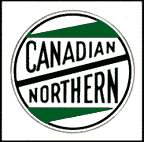
The Canadian Northern Railway (CNoR) was a historic Canadian transcontinental railway. At its 1923 merger into the Canadian National Railway, the CNoR owned a main line between Quebec City and Vancouver via Ottawa, Winnipeg, and Edmonton.

The Island Corridor, previously the Esquimalt & Nanaimo Railway, is a railway operation on Vancouver Island. It is owned by the Island Corridor Foundation, a registered charity. The railway line is 225 kilometres (140 mi) in length from Victoria to Courtenay, known as the Victoria Subdivision, with a branch line from Parksville to Port Alberni, known as the Port Alberni Subdivision, of 64 kilometres (40 mi), for a total 289 kilometres (180 mi) of mainline track. In 2006, the Island Corridor Foundation acquired the railway's ownership from RailAmerica and Canadian Pacific Railway.

The Canadian is a transcontinental passenger train operated by Via Rail with service between Union Station in Toronto, Ontario, and Pacific Central Station in Vancouver, British Columbia, Canada.

The Atlantic was a passenger train operated by Via Rail, serving both Canadian and U.S. territory between Montreal, Quebec, and Halifax, Nova Scotia. It was previously operated by Canadian Pacific Railway as The Atlantic Limited between Montreal and Saint John, New Brunswick. It formed part of the transcontinental service for both systems.

The Royal Hudsons are a series of semi-streamlined 4-6-4 "Hudson" type steam locomotives formerly owned and operated by the Canadian Pacific Railway (CPR) and built by Montreal Locomotive Works (MLW). The engines were built in 1937. In 1939, King George VI allowed the CPR to use the term after Royal Hudson number 2850 transported the royal train across Canada with no need of replacement. These locomotives were in service between 1937 and 1960. Four of them have been preserved. No. 2839 was used to power excursions for the Southern Railway Steam Program between 1979 and 1980. No. 2860 was used for excursion service in British Columbia between 1974 and 1999, then again between 2006 and 2010.

Windsor Station is a former railway station in Montreal, Quebec, Canada. It used to be the city's Canadian Pacific Railway (CPR) station, and served as the headquarters of CPR from 1889 to 1996. It is bordered by Avenue des Canadiens-de-Montréal to the north, Peel Street to the east, Saint Antoine Street to the south and the Bell Centre to the west.

Coquitlam Central station is an intermodal rapid transit station in Metro Vancouver served by both the Millennium Line—part of the SkyTrain system—and the region's West Coast Express commuter rail system. The station is located on the north side of the Canadian Pacific Railway (CPR) tracks in Coquitlam, just west of the Lougheed Highway rail overpass, near the Coquitlam Centre shopping mall. 601 parking spaces are available on site. All services are operated by TransLink.
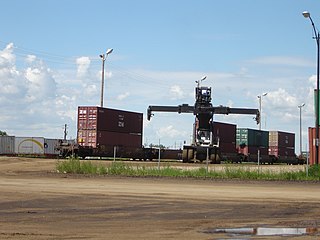
The Canadian National Railway (C.N.) Yards Management Area located on Chappell Drive, Saskatoon, Saskatchewan consists of the VIA Saskatoon railway station and the train switching yards. These yards are a part of the Confederation Suburban Development Area (SDA). It lies (generally) north of the outskirts of the City and the Rural Municipality of Corman Park No. 344, west of Montgomery Place, south of 11th Street and east of Highway 7. Highway 7 has built an overpass over C.N. tracks where they intersect. This neighbourhood is not to be confused with the C.N. Industrial in the Nutana SDA on the east side of Saskatoon. These two sides of Saskatoon are connected with the Grand Trunk Bridge or CN railway bridge over the South Saskatchewan River.
Boston Bar station is a railway station in Boston Bar, British Columbia, Canada, located at the border of CN's Ashcroft subdivision.
North Bend station is a railway station in North Bend, British Columbia, Canada, located at the border between CPR's Cascade and Thompson subdivision.
Chilliwack station is a railway station in Chilliwack, British Columbia, Canada. The station consists solely of a signpost and paved low-level platform located on the north side of the CN Railway tracks at Nowell Street.
Mission Harbour station is a railway station in Mission, British Columbia, Canada, located along CPR's Cascade subdivision. It sits just north of the Mission Railway Bridge at Harbour Avenue.
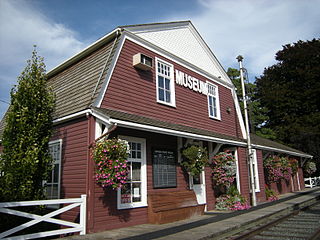
Agassiz station is a railway station in Agassiz, British Columbia, Canada, located along CPR's Cascade subdivision. The station is served by Via Rail's The Canadian as a flag stop.
Katz station is a railway station in Katz, British Columbia, Canada. It serves as a flag stop for Via Rail's The Canadian train. It is on the Canadian Pacific Railway Cascade subdivision, east of Ruby Creek.

The Cisco Bridges are a pair of railroad bridges at Siska near Lytton, British Columbia, Canada. The Canadian Pacific Railway and Canadian National Railway both follow the route of the Fraser River, one on each side, and the routes exchange sides at this point. The easier CPR route was laid first; when the CNR arrived later they needed to follow the more difficult route. The area is popular with railfans due to the proximity of the two bridges, and the easy access to the area is parallel to both bridges down the east bank of the river. Directional running in the Fraser Canyon means that both CPR and CNR trains may be seen on both bridges. Although this area is generally known as Cisco, the actual CN timetable station point of Cisco is approximately 4.0 km (2.5 mi) to the east of the bridges.

